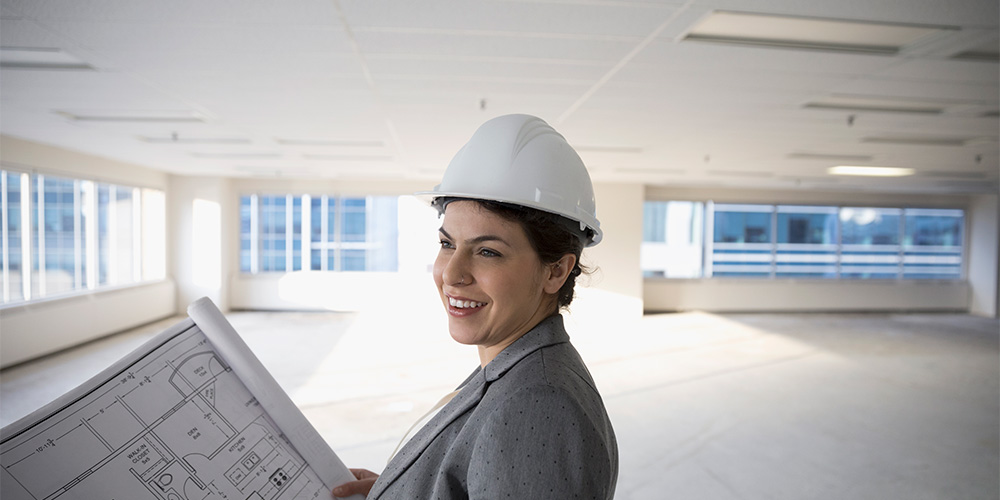
It's a four-letter word no building owner wants to hear: mold.
Yet, it's an all-too-common occurrence in buildings where moist air accumulates on vulnerable wall components, including insulation, exterior sheathing or interior wall boards. This building envelope penetration can dramatically impact indoor air quality and occupant health.
According to the Centers for Disease Control (CDC), exposure to damp and moldy environments can cause a variety of health issues, from irritation of the throat, eyes and skin to upper respiratory tract symptoms; people with mold allergies may experience more severe reactions.
Air leakage is a major cause of moisture intrusion, setting up the conditions for mold growth. Even a relatively small void in a wall surface can allow a lot of moisture into a building. Consider this: Air leaking through a one-inch hole in a 4-by-8-foot sheet of gypsum board can carry with it 30 quarts of water during a single heating season; the same gypsum board with no hole will allow just 1/3 quart of water to pass through via vapor diffusion.2 This moisture can collect in wall structures. When the relative humidity (RH) of these areas reaches 80% to 95% in warm temperatures it can create the ideal conditions for mold to grow.
A properly installed, continuous air barrier can minimize this leakage and dramatically reduce moisture intrusion through wall structures. "Continuous" means that the air barrier must be solidly adhered to the substrate, with any seams around windows, doors and other penetrations properly detailed and flashed. The goal is to deny the outside air—and the moisture it contains—any point of entry.
Contact an air barrier specialist today
What about moisture generated inside the building? Under some environmental conditions, it may be desirable to have a wall that "breathes"—allowing moisture vapor inside the building to escape, while resisting outside air leakage. This calls for a vapor permeable air barrier.
In cold climates with little exterior insulation, it may be preferable to use a vapor impermeable air barrier. This acts as a vapor barrier as well as an air barrier, minimizing the risk of water vapor condensing within the external wall.
Which type of air barrier is right for your location and wall structure? Answering that question definitively may require a hydrothermal analysis. This analysis looks at a number of factors, including climactic conditions, the location of insulation relative to the stud cavity (inside, outside or both), and how absorptive the cladding material is.
With the right air barrier, properly installed, you can minimize your chances of hearing that dreaded four-letter word: mold.
Related
November 10, 2017
To Protect Building Durability, Focus on Air Barrier Durability
As discussed in a previous blog post, minimizing air leakage through the building envelope is important to protecting the long-term durability of a structure. Uncontrolled air flow introduces moisture...
READ MOREDecember 11, 2017
How much can air barriers save? Ask the calculator.
Air leakage in residential and commercial buildings is a major source of energy waste. According to the U.S. Energy Information Administration, buildings consumed about 40% of the total energy used in...
READ MOREDecember 11, 2017
Understanding Key Air Barrier Terms
Employing air barriers to prevent air leakage and energy loss as a key piece of the building envelope has become standard practice in the construction industry. But unless you have a degree in buildin...
READ MOREJanuary 10, 2018
ASTM E 2357: Air Leakage Testing for the Real World
Real-world conditions By reducing air leakage, a continuous air barrier assembly can improve a building’s energy efficiency and reduce the risk of moisture damage within wall assemblies. However, air...
READ MORESeptember 21, 2017
Stay dry: Why rain resistance matters when choosing an air barrier
Imagine your contractor's crew has just spent the day installing a fluid-applied air barrier on the exterior wall of your building, taking care to get a nice, consistent thickness to ensure proper per...
READ MORETags
- Air & Vapor Barriers
- Airports
- Architects
- Arts & education
- Building Envelope Solutions
- Commercial buildings
- Contractor
- Energy efficient solutions
- Energy facilities
- Engineer
- Industrial facilities
- Museums
- PERM-A-BARRIER
- PERM-A-BARRIER® NPS
- PERM-A-BARRIER® VPL 50RS
- PERM-A-BARRIER® VPS
- Retail buildings
- Schools
- Sports stadiums
- Subcontractor
- Sustainability